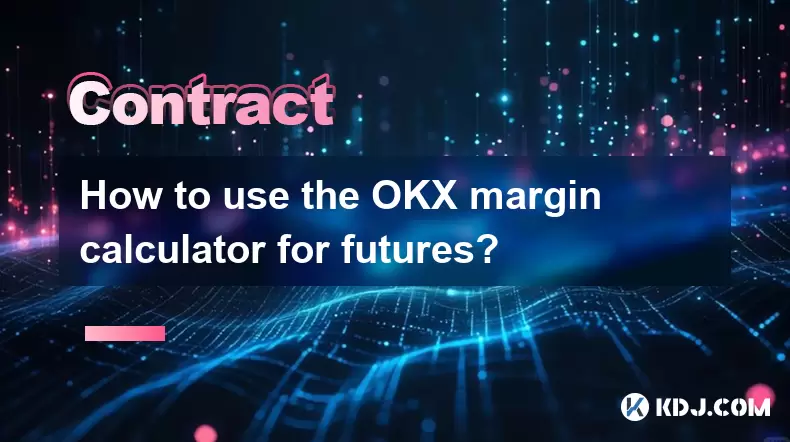-
 Bitcoin
Bitcoin $117500
2.15% -
 Ethereum
Ethereum $3911
6.19% -
 XRP
XRP $3.316
10.79% -
 Tether USDt
Tether USDt $1.000
0.01% -
 BNB
BNB $787.2
2.24% -
 Solana
Solana $175.2
4.15% -
 USDC
USDC $0.9999
0.00% -
 Dogecoin
Dogecoin $0.2225
8.40% -
 TRON
TRON $0.3383
0.28% -
 Cardano
Cardano $0.7868
6.02% -
 Stellar
Stellar $0.4382
9.34% -
 Hyperliquid
Hyperliquid $40.92
7.56% -
 Sui
Sui $3.764
7.63% -
 Chainlink
Chainlink $18.48
10.66% -
 Bitcoin Cash
Bitcoin Cash $582.1
1.88% -
 Hedera
Hedera $0.2601
6.30% -
 Avalanche
Avalanche $23.33
4.94% -
 Ethena USDe
Ethena USDe $1.001
0.02% -
 Litecoin
Litecoin $122.3
2.04% -
 UNUS SED LEO
UNUS SED LEO $8.969
-0.27% -
 Toncoin
Toncoin $3.339
0.86% -
 Shiba Inu
Shiba Inu $0.00001287
4.30% -
 Uniswap
Uniswap $10.43
7.38% -
 Polkadot
Polkadot $3.861
5.08% -
 Dai
Dai $1.000
0.02% -
 Bitget Token
Bitget Token $4.513
3.41% -
 Monero
Monero $267.7
-6.18% -
 Cronos
Cronos $0.1499
4.14% -
 Pepe
Pepe $0.00001110
5.15% -
 Aave
Aave $284.9
8.28%
How to view the historical orders of LBank contract? Can the transaction records be exported?
To view historical orders on LBank, log in, go to the "Futures" or "Perpetual" tab, and select "Orders" or "Order History" to filter and review your transactions.
May 04, 2025 at 08:57 am

LBank is a popular cryptocurrency exchange that offers a variety of trading options, including futures and perpetual contracts. For traders who engage in contract trading on LBank, it is crucial to have access to historical orders and transaction records. This article will guide you through the process of viewing historical orders of LBank contracts and explain whether transaction records can be exported.
Accessing the LBank Platform
To begin, you need to access the LBank platform. Log in to your LBank account using your credentials. If you do not have an account, you will need to create one and complete the necessary verification steps. Once logged in, navigate to the trading section where you can find the futures and perpetual contract trading interfaces.
Navigating to the Contract Trading Section
On the LBank platform, click on the "Futures" or "Perpetual" tab depending on the type of contract you are interested in. This will take you to the contract trading section where you can view various trading pairs and initiate new trades. Ensure you are in the correct section before proceeding to view historical orders.
Viewing Historical Orders
To view your historical orders on LBank, follow these steps:
- Navigate to the "Orders" or "Order History" tab within the contract trading section. This tab might be labeled differently depending on the specific interface of LBank, but it should be easily identifiable.
- Select the time frame for which you want to view the historical orders. LBank typically allows you to choose from various time frames such as the last 24 hours, last 7 days, last 30 days, or a custom date range.
- Filter the orders by status, such as "Filled," "Cancelled," or "Partially Filled," to narrow down the results to what you are looking for.
- Scroll through the list of orders to find the specific transactions you are interested in. Each entry will typically include details such as the order ID, date and time, trading pair, type of order, price, quantity, and status.
Understanding the Order Details
When reviewing your historical orders, it is important to understand the various details provided. Each order entry will show the following:
- Order ID: A unique identifier for each order.
- Date and Time: The exact time the order was placed.
- Trading Pair: The cryptocurrency pair involved in the contract.
- Type of Order: Whether it was a market order, limit order, or another type.
- Price: The price at which the order was executed.
- Quantity: The amount of the cryptocurrency involved in the order.
- Status: The current status of the order, such as filled, cancelled, or partially filled.
Exporting Transaction Records
LBank provides the option to export transaction records, which can be very useful for record-keeping and analysis. To export your transaction records, follow these steps:
- Go to the "Orders" or "Order History" tab where you can view your historical orders.
- Look for an "Export" or "Download" button. This button might be located at the top or bottom of the order history page.
- Select the format in which you want to export the data. Common formats include CSV, Excel, or PDF.
- Choose the time frame for the records you want to export. Similar to viewing historical orders, you can select from predefined time frames or a custom range.
- Click on the "Export" or "Download" button to initiate the download. Depending on the size of the data and your internet connection, this may take a few moments.
Once the download is complete, you will have a file containing all the transaction records within the specified time frame. This file can be opened with software compatible with the chosen format, allowing you to analyze the data further or keep it for your records.
Additional Tips for Managing Historical Orders and Transaction Records
To make the most out of your historical orders and transaction records on LBank, consider the following tips:
- Regularly review your order history to track your trading performance and identify any patterns or areas for improvement.
- Use the export feature to keep a backup of your transaction records. This can be helpful for tax purposes or for reviewing your trading history over an extended period.
- Organize your exported files by labeling them with clear names and storing them in a secure location. This will make it easier to find and reference them later.
Frequently Asked Questions
Q: Can I view historical orders from a mobile device on LBank?
A: Yes, you can view historical orders from a mobile device. LBank offers a mobile app that allows you to access the same features as the desktop version, including viewing historical orders and exporting transaction records. Simply download the app, log in to your account, and navigate to the contract trading section to access your order history.
Q: Is there a limit to how far back I can view my historical orders on LBank?
A: LBank typically allows users to view historical orders going back several months, but the exact time frame may vary. You can check the available options when selecting the time frame for viewing historical orders. If you need records older than what is available on the platform, you may need to rely on exported transaction records that you have saved.
Q: Can I export transaction records for multiple trading pairs at once on LBank?
A: The ability to export transaction records for multiple trading pairs at once depends on the specific features of LBank's platform. Typically, you can filter your order history by trading pair before exporting, which allows you to export records for one trading pair at a time. If you need records for multiple pairs, you may need to export them separately.
Q: Are there any fees associated with exporting transaction records on LBank?
A: LBank does not typically charge a fee for exporting transaction records. However, it is always a good idea to review the platform's fee structure to confirm, as policies can change. Additionally, ensure you have enough storage space on your device to save the exported files.
Disclaimer:info@kdj.com
The information provided is not trading advice. kdj.com does not assume any responsibility for any investments made based on the information provided in this article. Cryptocurrencies are highly volatile and it is highly recommended that you invest with caution after thorough research!
If you believe that the content used on this website infringes your copyright, please contact us immediately (info@kdj.com) and we will delete it promptly.
- Tron's Sell-Off Spurs Altcoin Shift: What's Next for TRX?
- 2025-08-08 08:30:12
- Sleep Token's US Takeover: Thornhill Rides the 'Even In Arcadia' Wave
- 2025-08-08 08:30:12
- FTT Token's Wild Ride: Creditor Repayments vs. Market Drop - A New Yorker's Take
- 2025-08-08 07:10:12
- Floki Crypto Price Prediction: Riding the Robinhood Rocket or Just a Meme?
- 2025-08-08 07:15:12
- EigenLayer, Restaking, and Ethereum: Navigating the Hype and the Hazards
- 2025-08-08 06:30:12
- Super Bowl 59: Jon Batiste to Jazz Up the National Anthem
- 2025-08-08 06:30:12
Related knowledge

What are the specific maker and taker fees on KuCoin Futures?
Aug 08,2025 at 08:28am
Understanding Maker and Taker Fees on KuCoin FuturesWhen trading on KuCoin Futures, users encounter two primary types of fees: maker fees and taker fe...

What is the minimum deposit for OKX contracts?
Aug 08,2025 at 07:00am
Understanding OKX Contract Trading BasicsOKX is one of the leading cryptocurrency derivatives exchanges, offering a wide range of perpetual and future...

Where can I find the OKX trading calculator?
Aug 08,2025 at 07:49am
Understanding the OKX Trading Calculator FunctionalityThe OKX trading calculator is a powerful analytical tool designed to assist traders in estimatin...

What are the available trading pairs for OKX futures?
Aug 08,2025 at 08:49am
Understanding OKX Futures Trading PairsOKX is one of the leading cryptocurrency derivatives exchanges, offering a wide range of futures trading pairs ...

Are there any fees for futures settlement on OKX?
Aug 08,2025 at 05:35am
Understanding Futures Settlement on OKXFutures settlement on OKX refers to the process by which open futures contracts are automatically closed or mar...

How to use the OKX margin calculator for futures?
Aug 08,2025 at 05:15am
Understanding the OKX Margin Calculator for FuturesThe OKX margin calculator is a specialized tool designed to assist traders in estimating the requir...

What are the specific maker and taker fees on KuCoin Futures?
Aug 08,2025 at 08:28am
Understanding Maker and Taker Fees on KuCoin FuturesWhen trading on KuCoin Futures, users encounter two primary types of fees: maker fees and taker fe...

What is the minimum deposit for OKX contracts?
Aug 08,2025 at 07:00am
Understanding OKX Contract Trading BasicsOKX is one of the leading cryptocurrency derivatives exchanges, offering a wide range of perpetual and future...

Where can I find the OKX trading calculator?
Aug 08,2025 at 07:49am
Understanding the OKX Trading Calculator FunctionalityThe OKX trading calculator is a powerful analytical tool designed to assist traders in estimatin...

What are the available trading pairs for OKX futures?
Aug 08,2025 at 08:49am
Understanding OKX Futures Trading PairsOKX is one of the leading cryptocurrency derivatives exchanges, offering a wide range of futures trading pairs ...

Are there any fees for futures settlement on OKX?
Aug 08,2025 at 05:35am
Understanding Futures Settlement on OKXFutures settlement on OKX refers to the process by which open futures contracts are automatically closed or mar...

How to use the OKX margin calculator for futures?
Aug 08,2025 at 05:15am
Understanding the OKX Margin Calculator for FuturesThe OKX margin calculator is a specialized tool designed to assist traders in estimating the requir...
See all articles

























































































